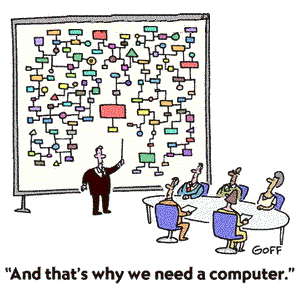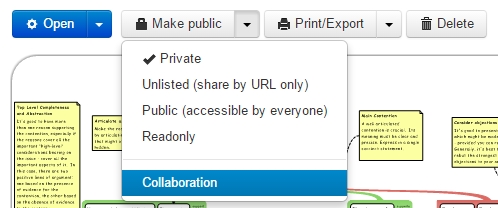There is abundant empirical evidence that argument mapping (AM) really can work for developing critical thinking skills ( why 'can'? : you need to exercise a lot and receive timely, good-quality feedback).
As Tim van Gelder writes in this review of empirical research on the impact of AM instruction:
“Indeed, at this stage it seems fair to say that high-intensity AM-based instruction is one of the most effective techniques we know for accelerating CT skill gains in higher education.”
Maralee Harrell noted in her paper No Computer Program Required: Even Pencil-and-Paper Argument Mapping Improves Critical Thinking Skills (2008), that you can map arguments using paper & pencil or software.
She wrote:
‘’To my knowledge there has been no research to determine whether the crucial factor is the mere ability to construct argument maps, or the aid of a computer platform and tutor, or possibly both.’’
In the online journal Education Technology Research & Development of February 2016 Maryam Eftekhari , Elaheh Sotoudehnama and S. Susan Marandi (English Language Department, Alzahra University, Tehran, Iran) just published a research paper in which they try to answer this question, using Rationale.
Their conclusion: ‘’Results suggested that students in the software group significantly outperformed those in the paper and pencil group on overall CCTST and the sub-skills of inference and inductive reasoning. They also scored significantly higher on all tests compared to the comparison group.’’
For their paper see here.

The Collaboration function in Rationale Extra allows users to share maps with other users with one mouse click. More information on this option you can find in our new Rationale Help here. In addition here under some tips on how to use this function.
To share a map you first need to choose the Collaboration option you see when you open a map in your My Maps:

You can share a map with other users by inserting their username or email address:

You can use an email address only when the owner has given permission to do so in his/her My Profile by ticking the option: 'Email is Public?'
Only when 'Notifications?' in your My Profile its ticked, you will receive an email notification that someone has shared a map with you.
When you want to share a map with a group of people you can do so by first making a group here:

First type the name of a group and give [Enter]. Next, copy/paste the usernames or email addresses of your group members, comma separated and give [Enter]. Finally, add the name of the group in the box at the top and give [Enter].
When you want to share a map with e.g. a class of students by using people's email addresses, make sure you have the email addresses that are connected to the accounts of the group members and they have ticked the option 'Email is Public'.
When you share a map you can choose between 'Read/write' and 'Read-only'.
The difference between Read-only as a separate option and Read-only within Collaboration is that a map with the status Read-only can be seen by everyone with the url/link. A map with the status Collaboration-Read-only can only be read by people/groups that are connected to this map; so this option is more safe.
When someone has shared a map with you, you will see the map in the folder 'Shared with me' in your My Maps.
The owner of the map has control. So, when he/she decides to stop sharing it with you, you will have no access any longer.
The Revision History of the map is available to all with whom the map is shared.
When you are a lecturer and ask your students to share maps with you, make sure that you have communicated the way they should name their maps. E.g. a combination of their own name, name of the assignment and version.
Each change that is made in a map is visible for the other members of the group when they refresh their editor (F5). There is a chance that two changes being made at exactly the same time in a map will not be saved both, so some coordination - e.g. by Skype - is asked for especially when you are working with a bigger group. This will be solved when real-time working together is available late this year.
Giving feedback on a shared map can be done on several ways: click on a box and add a note (Ctrl+A), click on the screen and type your text in a box, or add a Comment in the tab in the Text Panel.
We will post a link to this blog post in the Forum too so that other tips on how to use Collaboration can be shared there.
The Rationale Team
Having been in Hong Kong last week to introduce the Chinese version of Rationale, I am puzzled by the topic of cultural differences and their relationship with critical thinking.
The driving question of critical thinking and the question you ask when you are evaluating in Rationale each part of an argument map is: why should I believe this claim? What is the quality of the evidence? How true or acceptable are reasons provided? How strong is the inference that is being made? As an example of these questions see this hand-out Critical Questions for Analysing Maps.
By contrast, the maker of the Japanese version of Rationale, Akira Sato, wrote in a personal email:
‘ What may seem obvious to the West is not in Japan. Japanese tend to communicate using language(words) based on sympathy/passion and unsaid-context. Valid reasoning is frequently missing in "arguments" between Japanese. Explanation for that is, culturally it is impolite to ask a person why, why, why and likeness of agreeing people.
But this anti-argumentative culture should change in some areas since western style persuasion is required at business situations especially when colleagues who speaks English gather from all over the world.’
In Hong Kong there was great enthusiasm when teachers and people from the Educational Office saw what Rationale can do. They feel a strong need to infuse their secondary education with tools for developing critical thinking skills.
At the same time they told me that in China people tend to speak in stories and not so much in claims and they take positions that are polite, in between extremes, as not to offend people. They suggested a relationship with Confucianism here.
So acceptance of and asking the question: Why should I believe this? cannot be taken for granted. Some searching on the internet makes clear this is a topic in which stereotypes flourish ( about The East, The West, students, the educational system in China, rote learning etc.).
Apart from the question whether there is really such a difference between for instance critical thinking skills of students from China and students from ‘the West’, discussion is e.g. about explaining factors: is it culture, the educational system, a language problem (students using English as a second language), unique linguistic features of languages, a characteristic of a certain phase in cognitive development, the vagueness of the concept of critical thinking and more.
Read this tread to learn that in China the use and translation of the concept of critical thinking itself is loaded with all kind of political issues.
In this article of Michael O’Sullivan and Linyuan Guo the authors ‘’..engage in a dialogue on Western concepts of critical thinking and the reaction of one class of Chinese international students to this pedagogy.”
Sonja Elsegood ( of the Indonesia Australia Language Foundations) wrote a fascinating article: Teaching Critical Thinking in an English for Academic Purposes Program using a ‘Claims and Supports’ approach.
From the Abstract:
‘We argue the ‘claims and supports’ framework offers a useful set of principles for teaching critical thinking in EAP programs, and also has implications for cross-cultural teaching and learning because it recognizes that approaches to knowledge construction differ from one culture to another.
Difference does not mean deficit, but it does need to be made explicit, otherwise it forms part of a’ hidden curriculum’ which blocks students’ success.’
Being not an expert in this field, I would like to hear experiences and ideas of others.